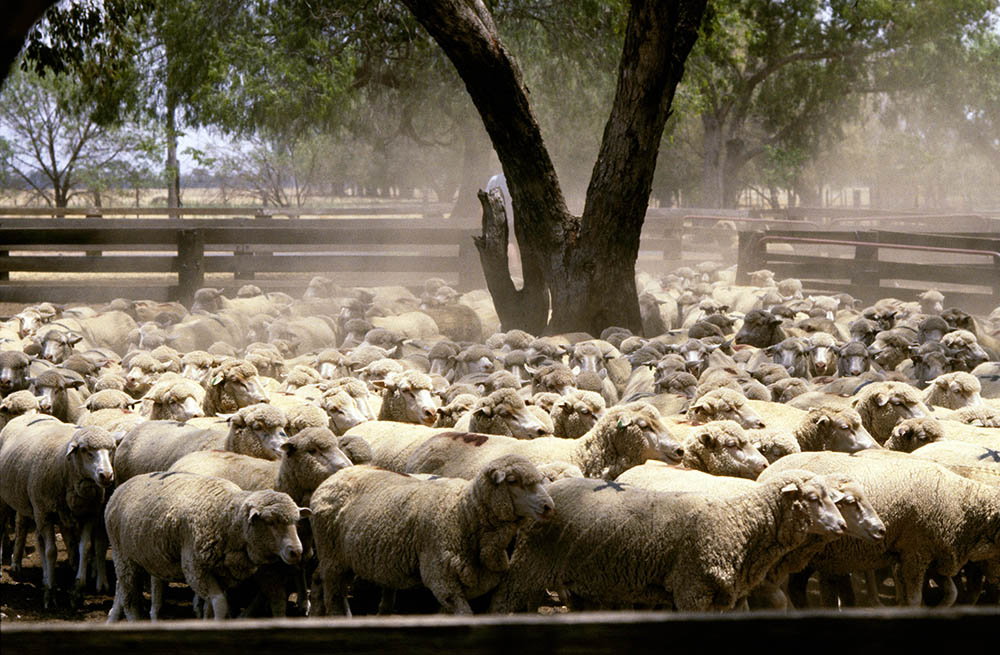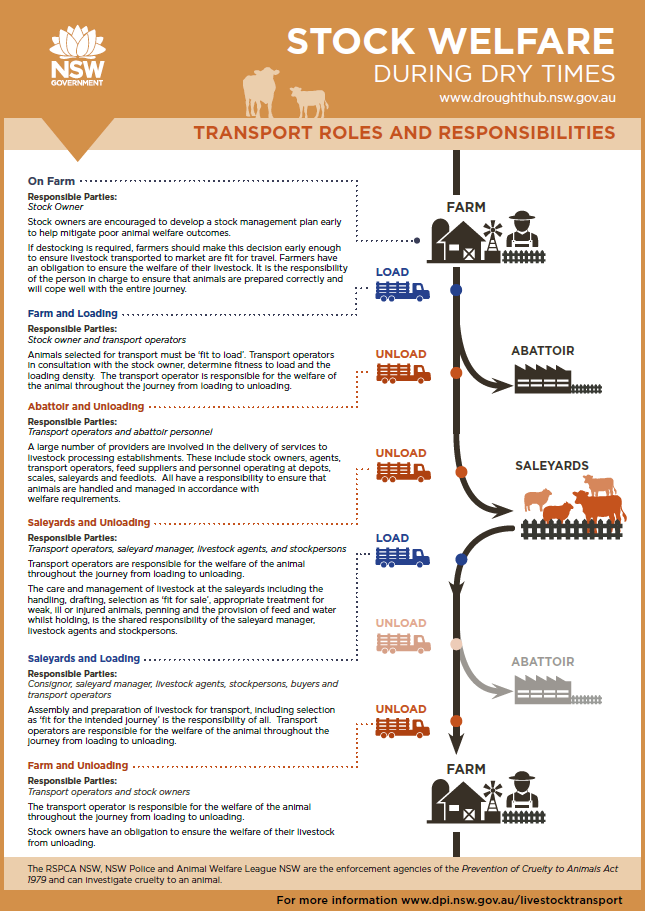- GVP $1,462 million est. Up 16% year-on-year.
- Steady and historically high prices continue to drive growth.
- The volume of mutton exports remained relatively steady, offset by a gain in the volume of lamb exports.
Production
Reflecting this uptick in supply, there was a 17% year-on-year increase in east coast sheep yardings, driven largely by NSW saleyards. 211 Sheep slaughter increased by 33% to just over 2.1 million head and average sheep carcase weights fell slightly, softening by 2.3% year-on-year however, still well above the 10-year average weight. 211 An annual total of 59,908 tonnes cwt of mutton was produced, up by 28% on the previous year. 211
Lamb supply increased off the back of elevated marking rates for both the spring and autumn lambing seasons. This resulted in more lambs available to retain and for sale. The October 2021 and February 2022 MLA/AWI Sheepmeat & Wool Survey indicated that marking rates were well up across all breeds. 28 Despite this increase in supply, NSW lamb slaughter remained relatively steady year-on-year, increasing by only 1% to 5.2 million head, 211 reflective of the flock rebuilding intentions. Average lamb carcase weights eased slightly, following the trend set by sheep, down 2.7% year-on-year to average 25.4 kilograms per head. 211 This decrease in average carcase weight offset the slight increase in slaughter and production of lamb fell 1.6% to 134,568 tonnes cwt. 211
Sheepmeat production and slaughter 211
- Lamb Slaughter
- Sheep Slaughter
- Lamb Production (RHS)
- Mutton Production (RHS)
Price
The Eastern States Trade Lamb Indicator (ESTLI) found its winter peak of 960c/kg in August 2021 and began its seasonal drift downwards as the annual spring flush commenced to finish the year at 792c/kg cwt. 211 AuctionsPlus quarterly lamb category prices highlight the overall positive price trends for 2021-22. The strength of the First cross ewe lamb and Merino ewe lamb markets continued throughout 2021-22 highlighting the ongoing strong demand for breeding stock.
New season lamb yardings were slightly higher and later than usual. 41 This surge in supply placed heightened pressure on prices during the usual price volatility that is typical of the spring period. Some processing bottlenecks were also created as the increased supply met with lambs supplied on favourable forward contracts that were available in late 2021. 41 Supply eased off slightly during early 2022 as COVID-19- impacted processor operational capacities and producers held back stock to avoid the resulting price volatility. 214
AuctionsPlus quarterly average lamb prices 41
- Crossbred Lambs
- Merino Ewe Lambs
- Merino Wether Lambs
- First X Ewe Lambs
- Shedding Breed Lambs
- Composite/Other Breed Lambs
Trade and Macroeconomic Conditions
Both the value and volume of NSW sheepmeat exports increased, with mutton exports remaining relatively steady and offset by a gain in both the volume and value of lamb exports. The total volume of NSW sheepmeat exports increased 5% to 128 thousand tonnes whilst the value increased by an impressive 29% year-on-year to $1.35 billion. 35 This reflected a substantial 23% increase in the unit value of sheepmeat exports with each unit of sheepmeat valued at $10.57/kg compared to $8.59/kg in 2020-21. 35 China remained the largest market by both value and volume and a market share of 38% by value 35 however, it was the only major market that did not show volume growth in 2021-22, with year-on-year exports declining by 4%, likely due to the impacts of ongoing COVID-19 restrictions on foodservice and logistical issues. 44 The US remained second largest market with a market share of 26%, with South Korea, Japan, and Canada rounding out the top 5 destinations by value.
Exports to the UK were the standout growth market for sheepmeat, increasing in value by 118% year-on-year. 35 Over the last two decades, sheepmeat exports to the UK have halved and the proportion of exports to the UK as a percentage of total NSW sheepmeat exports moved from around 11% of exports to 2% in recent years. The Australia-UK Free Trade Agreement, signed in December 2021, enabled immediate access to a duty-free quota of 25,000 tonnes, rising to 75,000 tonnes in 10-years. Whilst Australian sheepmeat is not expected to immediately flow into the UK in large volumes, this agreement does facilitate increased market diversity, particularly for high-value, premium cut products.
NSW Lamb export volumes were reasonably steady year-on-year, up by 5% to 75 thousand tonnes and valued at $896 million. 35 Demand from the US strengthened, with lamb exports to the US reaching to over 19 thousand tonnes in 2021-22, the highest annual figure on record and 13% higher than the volume exported in 2020. Poor weather and COVID-induced processing difficulties resulted in a decline in the US flock and thus an increased reliance on imports. 42
Similar to lamb exports, mutton export volumes were relatively stable, rising by a modest 3% year-on-year to 51 thousand tonnes. 35 Mutton export values rose by a substantial 24% year-on-year to reach $447 million. 35
Outlook

Stronger Primary Industries Strategy
Protecting animal welfare in drought through Stock Welfare Panels
Stock Welfare Panels are a structured process that seek to improve animal welfare outcomes in situations where stock animals have not been provided proper and sufficient food, drink, or shelter, or necessary veterinary treatment. Stock Welfare Panels are particularly important tools in times of drought, when climatic conditions may compromise the ability of farmers to meet the needs of their animals.
The Panels are chaired by a Department of Primary Industries (DPI) representative and includes as members a representative of Local Land Services (LLS) who has expertise in animal welfare or stock management (typically a veterinary practitioner), an animal welfare inspector authorised under the Prevention of Cruelty to Animals Act 1979, and a veterinary practitioner (if the DPI or LLS member isn’t a veterinary practitioner). In most cases, the Panel also includes a representative from the NSW Farmers’ Association.
Strategic Outcome


The primary aim of the Stock Welfare Panel is always to address the welfare situation, however if these interventions fail, the last resort of the Stock Welfare Process is to seize and dispose of the affected stock. Seizure and disposal is not a decision taken lightly and is only taken if all other alternatives to address the welfare issues have been exhausted.
Where animals have to be seized, those that are fit for transport are sent for sale and the proceeds are returned to the farmer (less the costs incurred in seizing and selling the animals). Animals that are not fit to load may have to be humanely euthanased.
The Stock Welfare Panel process was established in 2012, and since 2018 Stock Welfare Panels have facilitated better welfare outcomes for more than 33,000 stock animals. The Stock Welfare Panel process is well regarded in farming communities and is seen as a flexible tool to address long term welfare issues through bringing together people with local knowledge and industry expertise to work collaboratively with the stock owner, with the purpose being to achieve good welfare outcomes for the animals and for the people involved.


